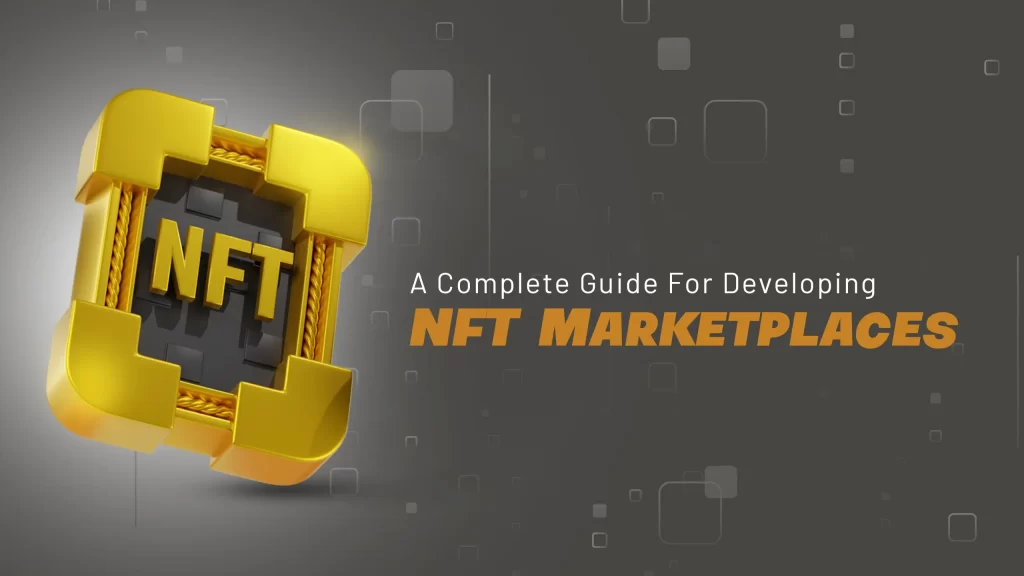
Non-Fungible Tokens (NFTs) have taken the digital world by storm, revolutionizing the way we perceive and exchange digital assets. NFTs represent unique and indivisible digital assets, typically stored on blockchain platforms. One of the significant applications of NFTs is in the creation of NFT marketplaces, which serve as platforms for buying, selling, and trading these unique digital assets. This article serves as a comprehensive guide for developers looking to embark on the exciting journey of building NFT marketplaces.
Understanding NFT Marketplace:
Before diving into the development process, it’s crucial to have a solid understanding of Non-Fungible Tokens. Unlike traditional cryptocurrencies such as Bitcoin or Ethereum, NFTs are unique and cannot be exchanged on a one-to-one basis. Each NFT is distinguishable from others, making it a perfect solution for representing ownership and authenticity of digital assets.
Key features of NFTs include indivisibility, verifiability, and the ability to represent a wide range of digital and physical assets, including art, music, videos, virtual real estate, and more. NFTs are typically built on blockchain platforms like Ethereum, Binance Smart Chain, and others, utilizing smart contracts to define and enforce ownership rules.
Steps to Develop an NFT Marketplace:
1. Define Your Niche and Audience:
Identify the target audience and the specific niche your NFT marketplace will cater to. Whether it’s digital art, music, virtual real estate, or other assets, understanding your users’ needs is crucial for a successful marketplace.
2. Choose the Blockchain Platform:
Select a blockchain platform that supports the creation and trading of NFTs. Ethereum is the most popular choice, but Binance Smart Chain, Flow, and others are gaining traction. Consider factors like transaction costs, scalability, and community support when making this decision.
3. Smart Contract Development:
Develop smart contracts that define the logic of your NFTs, including creation, ownership transfer, and royalties. Consider using existing standards like ERC-721 or ERC-1155 for Ethereum-based NFTs.
4. Integration of Wallets:
Incorporate wallet integrations to allow users to connect their digital wallets to the marketplace. Popular wallet options include MetaMask, Trust Wallet, and Coinbase Wallet. This ensures secure transactions and ownership verification.
5. User Authentication and Authorization:
Implement a robust user authentication system to secure user accounts and prevent unauthorized access. Utilize OAuth or other authentication protocols and integrate proper authorization mechanisms for different user roles.
6. User Interface (UI) and User Experience (UX) Design:
Create an intuitive and visually appealing UI/UX design for your marketplace. Ensure that users can easily navigate the platform, view NFT listings, and participate in auctions or sales. Responsive design is crucial for a seamless experience across devices.
7. NFT Minting:
Develop a mechanism for users to mint NFTs on your platform. Minting involves creating new NFTs and assigning ownership. Define the parameters for minting, such as royalties for creators and other metadata associated with the NFT.
8. Listing and Marketplace Features:
Implement features for users to list their NFTs for sale or auction. Include search and filter functionalities to help users discover relevant NFTs easily. Integrate a bidding system for auctions and a fixed-price option for direct sales.
9. Payment Integration:
Integrate secure payment gateways to facilitate transactions. Accept cryptocurrencies, including Ethereum or other native tokens of the chosen blockchain, and consider traditional payment methods for broader accessibility.
10. Smart Contract Upgradability:
Plan for the upgradability of smart contracts to incorporate new features, fix bugs, or adapt to changes in the blockchain ecosystem. Include a governance mechanism to involve the community in decision-making processes.
11. Community and Marketing Strategy:
Develop a marketing strategy to attract users and creators to your NFT marketplace. Leverage social media, influencers, and partnerships within the NFT community. Engage with the community to gather feedback and continuously improve the platform.
12. Security Audits:
Conduct thorough security audits to identify and address potential vulnerabilities. Work with blockchain security experts or audit firms to ensure the integrity and safety of your NFT marketplace.
Conclusion:
Developing an NFT marketplace is an exciting venture that requires careful planning, technical expertise, and a deep understanding of the blockchain ecosystem. By following the steps outlined in this guide, developers can lay the foundation for a successful NFT marketplace that caters to the growing demand for unique digital assets. As the NFT space continues to evolve, staying informed about new technologies and trends will be crucial for maintaining a competitive edge in the market.
